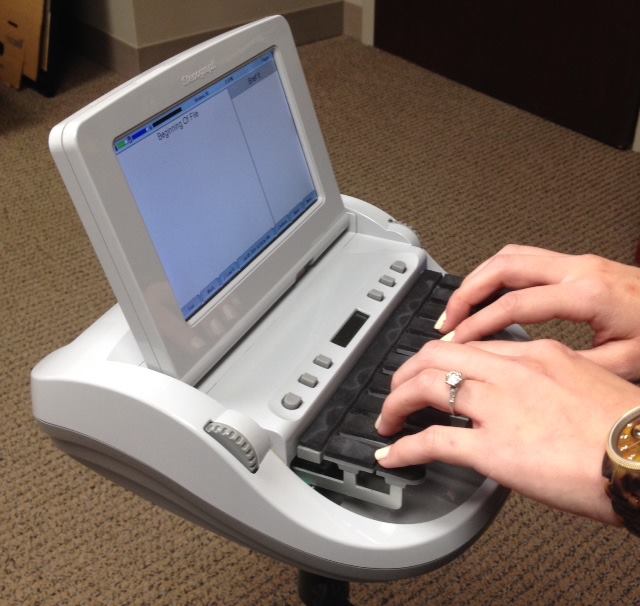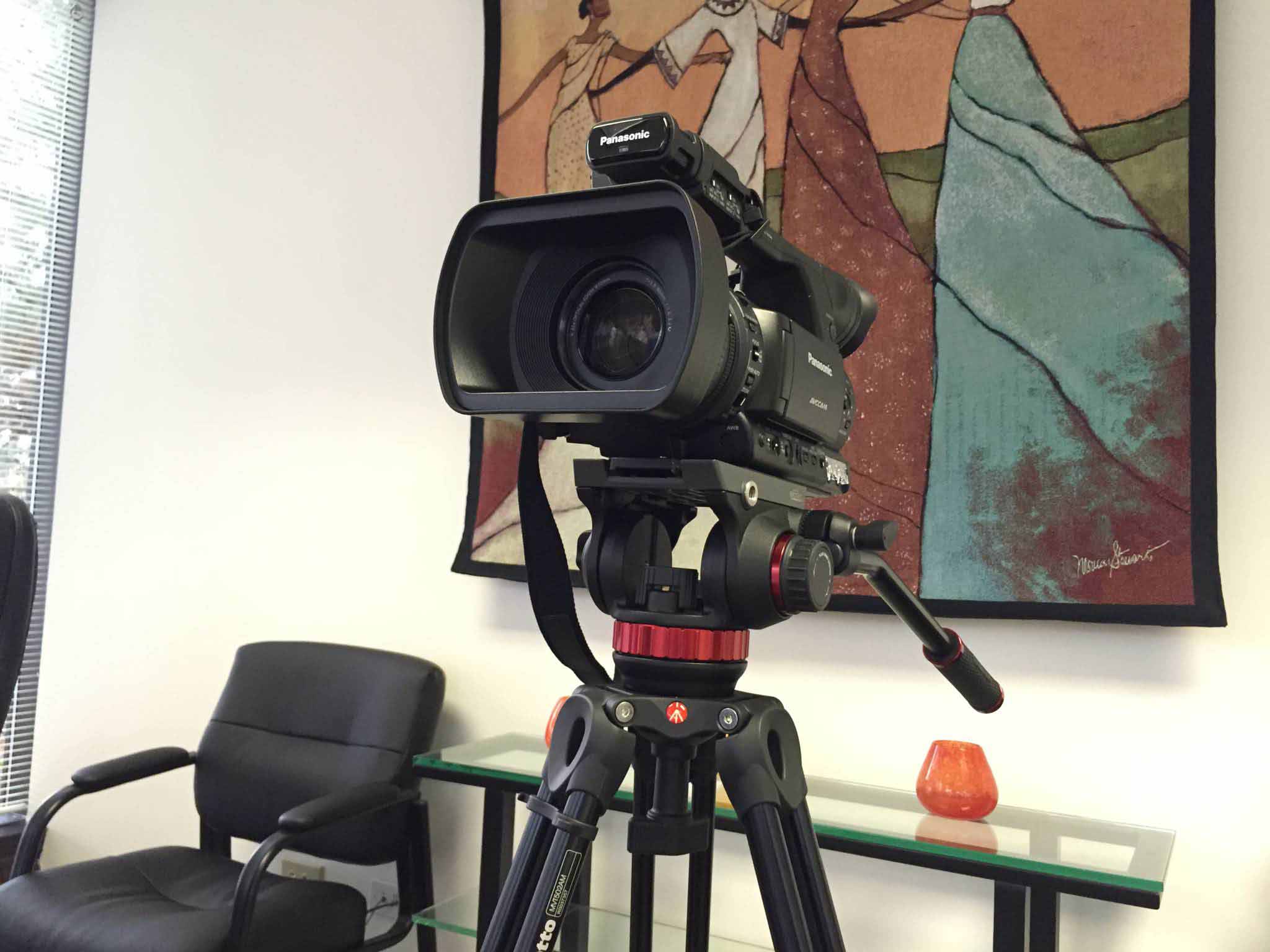Comprehending How Court Coverage Functions: A Trick Part in the Justice System
Court reporting plays an essential role in the legal system. It ensures that all court room process are documented accurately. Court reporters utilize specific equipment and techniques to create verbatim records. These records offer different objectives, consisting of charms and legal quality. Comprehending the complexities of court coverage reveals its significance in keeping the stability of justice. What obstacles do stenotype reporter encounter in this progressing area?
The Role of Court Reporters in the Legal System
Stenotype reporter play an essential function in the lawful system, guaranteeing exact and trusted documentation of courtroom procedures. They are accountable for capturing every talked word during tests, hearings, and depositions, producing a verbatim transcript that works as a long-term document. This documents is important for charms, giving a structure for higher courts to evaluate cases.In addition to transcribing spoken language, stenotype reporter additionally help with interaction between lawyers, courts, and various other parties associated with legal issues. Their work advertises transparency and accountability within the judicial process.Utilizing specialized devices and software application, court press reporters have to remain concentrated and attentive, usually working under stress to satisfy limited deadlines. Their transcripts are not just important for legal reference but also for protecting the integrity of judicial proceedings. Inevitably, stenotype reporter contribute greatly to the fair administration of justice, making certain that all voices are heard and videotaped accurately.
Vital Abilities Required for Court Coverage
Court reporting demands an unique set of skills that are important for accuracy and efficiency. Proficiency of stenography techniques, strong listening and understanding capacities, and thorough interest to information are critical for success in this field. These skills enable court reporters to produce dependable transcripts that act as vital documents in the lawful system.
Mastery of Stenography Techniques
While mastering stenography methods is crucial for aspiring court reporters, it needs dedication and practice to create the required abilities. Stenography involves making use of a specialized keyboard to capture spoken words in actual time, making accuracy and rate essential. Stenotype reporter should discover to make use of shorthand symbols and create muscular tissue memory to ensure reliable transcription. Regular exercise with dictation exercises aids in boosting typing rate, while experience with lawful terms enhances understanding throughout procedures. Recognizing the phonetic structure of the English language is substantial, as it assists in accurately catching discussion. Ultimately, effectiveness in stenography not just helps with efficient communication within the court but also supports the stability of the legal process.
Strong Listening and Understanding
Effective court reporting joints not only on stenography abilities however also on strong listening and understanding capabilities. Court press reporters should proactively listen to statements, legal arguments, and discussions, ensuring they understand the nuances of spoken language. This skill facilitates exact transcription of complicated lawful process, where every word matters. Comprehension extends beyond surface-level understanding; reporters need to analyze context, tone, and intent to capture the significance of conversations accurately. Furthermore, they commonly run into specialized terms and jargon, calling for fast adaptation and retention of information. The ability to synthesize what is listened to while simultaneously recording is important, as it guarantees the honesty of the authorities document. Solid listening and understanding are crucial in supplying accurate and dependable court records.
Focus to Detail
Attention to information is a fundamental skill for court reporters, enhancing their listening and comprehension capabilities. This precision guarantees that every spoken word, inflection, and nuance is recorded precisely in transcripts. Stenotype reporter need to carefully keep in mind lawful terminology, names, and complex discussion to offer dependable documents for legal proceedings. A small oversight can bring about significant repercussions, possibly affecting instance outcomes (durham reporting). Furthermore, court reporters often function under pressure, needing them to maintain focus and precision in fast-paced settings. Their attention to detail not just boosts the stability of the judicial procedure however also fosters trust fund among attorneys. Inevitably, this ability is crucial for producing records that work as definitive documents in court cases, guaranteeing justice is upheld
The Technology Behind Court Reporting
As court coverage progresses, the technology made use of by professionals in the field has actually come to be progressively innovative. Traditional shorthand writing has mainly been supplemented by innovative digital devices that boost speed and accuracy. Stenographic makers, outfitted with specialized software, allow stenotype reporter to capture spoken words in real-time, equating them into text instantly. This technology not only quickens the transcription procedure but additionally minimizes the potential for errors.Moreover, voice acknowledgment software is emerging as a valuable asset, enabling automated transcription from audio recordings. This innovation offers an alternative for developing records when a human press reporter may not be available. Furthermore, cloud-based storage options facilitate very easy accessibility and sharing of transcripts among lawful specialists, guaranteeing that vital info is conveniently offered. As these modern technologies remain to breakthrough, they play a crucial function in maintaining the integrity and efficiency of the justice system, inevitably sustaining the necessary work of stenotype reporter.
The Process of Recording Lawful Process
The procedure of recording legal proceedings needs a blend of skill and innovation to ascertain precision and performance. Stenotype reporter make use of specific tools, such as stenographic makers, to capture spoken words in real-time. This technology makes it possible for the reporter to transform dialogue into text, ensuring that every statement made throughout a test or hearing is documented.Once the session wraps up, the first transcripts undertake editing for clarity and comprehensibility. Reporters might additionally integrate audio recordings to cross-reference and verify the accuracy of their transcriptions. This thorough procedure warranties that the last paper shows a precise account of the proceedings.Additionally, court press reporters must preserve an extensive understanding of lawful terms and court room procedures to successfully convert spoken language right into written type. Their proficiency not just aids in developing dependable documents however likewise supports the lawful system by supplying important paperwork for charms and future recommendations.
Ensuring Precision and Honesty in Court Records
Guaranteeing accuracy and honesty in court records is critical for the judicial process. Court reporters play a critical duty in capturing procedures precisely, while improvements in innovation enhance their capacity to preserve high criteria. Additionally, supporting privacy standards is important to protect sensitive details within lawful papers.
Function of Court Reporters
Stenotype reporter play an essential function in the judicial system by capturing precise and verbatim accounts of legal proceedings. Their primary duty is to ensure that every talked word is documented specifically, providing a reliable record that can be referenced in allures and future situations. By using specialized equipment and strategies, stenotype reporter preserve the integrity of the court document, helping with transparency and accountability in the lawful process. They also aid courts, attorneys, and various other lawful professionals by providing transcripts that are vital for recognizing case details and lawful arguments - durham reporting. The precision of a stenotype reporter's job directly influences the outcomes of cases, underscoring their significant payment to the search of justice and the regulation of regulation
Technology in Reporting
Advancements in technology have significantly transformed the area of court coverage, boosting the precision and stability of court records. Modern stenotype reporter use innovative equipment such as stenographic devices and electronic audio recording devices, assuring accurate transcription of talked words. These devices enable real-time transcription, which supplies prompt access to court proceedings and promotes prompt decision-making. Furthermore, software application furnished with sophisticated formulas assist in recognizing and remedying errors, additionally bolstering the integrity of tape-recorded information. The assimilation of cloud storage web solutions ensures that records are firmly archived and conveniently retrievable, reducing the risk of loss or damages. Generally, these technical advancements play a necessary role in keeping the quality and dependability of court paperwork in the justice system.
Maintaining Privacy Criteria
A critical facet of court coverage is keeping discretion criteria, which are necessary for making certain the accuracy Look At This and stability of court records. Court reporters are handed over with sensitive information, calling for stringent adherence to moral guidelines and legal arrangements. This discretion safeguards not just the privacy of the entailed parties yet additionally the reliability of the judicial procedure. Reporters use safe and secure approaches for dealing with and saving records, usually utilizing encryption and limited gain access to protocols. In addition, they should browse the complexities of different lawful frameworks that regulate privacy in various jurisdictions. By upholding these requirements, stenotype reporter add substantially to the integrity of court documents, cultivating depend on in the justice system and guaranteeing that lawful process can be carried out with the utmost professionalism and trust and regard for privacy.
Different Kinds Of Court Coverage Providers
While the legal landscape proceeds to progress, the selection of court coverage services readily available has increased considerably to satisfy varied needs. Traditional court reporting stays important for recording verbatim transcripts throughout tests and depositions. Extra services have actually emerged, consisting of real-time coverage, which offers immediate access to transcriptions as they are created, advantageous for attorneys and judges.Video court coverage has actually additionally gained popularity, permitting for aesthetic paperwork of witness testaments, improving the document with non-verbal cues. Furthermore, remote court coverage has actually ended up being significantly appropriate, using virtual deposition services to accommodate geographical constraints.Lastly, some stenotype reporter focus on captioning services for the hearing damaged, ensuring access in legal process. This diverse variety of court coverage solutions enables legal experts to select the most suitable choice for their specific situations, ultimately enhancing the effectiveness and performance of the justice system.

The Future of Court Coverage in a Digital Age

As innovation remains to improve the legal field, the future of court coverage is positioned for considerable modification. The integration of sophisticated devices such as fabricated intelligence and real-time transcription software program Visit This Link is becoming increasingly common. These advancements guarantee to streamline the coverage process, enabling faster and much more precise paperwork of legal proceedings.Moreover, the change towards remote hearings demanded by international events has actually sped up the adoption of digital systems, enabling court reporters to function efficiently from different places. This modification also raises questions regarding the preservation of conventional skills, as the focus on modern technology can eclipse the nuanced art of shorthand reporting.Nonetheless, human court press reporters continue to be very useful, offering context, feeling, and expertise that devices can not reproduce. As the lawful landscape progresses, a crossbreed version that combines modern technology with human insight may specify the future of court coverage, ensuring its significance in a digital age.
Often Asked Inquiries

What Certifications Do Court Reporters Need to Function in the Area?
Court reporters generally require a secondary school diploma, specialized training in court reporting, and accreditation from relevant expert organizations. Efficiency in shorthand or voice writing and strong language abilities are necessary for success in this area.
The length of time Does It Take to Come To Be a Qualified Court Press Reporter?
Becoming a qualified stenotype reporter typically requires two to 4 years of education and learning, including specialized training and practice. The period varies based upon private development, the chosen program, and the qualification procedure, influencing total conclusion time.
Can Court Reporters Work Remotely or In-Person?
Court reporters can work both remotely and in-person, depending on the needs of a situation. Advancements in innovation have made it possible for numerous to provide solutions through video clip conferencing, enabling adaptability in their work environments.
What Is the Ordinary Salary for a Court Press reporter?
The average income for a stenotype reporter differs by place and experience, typically ranging from $50,000 to $80,000 each year. Aspects such as field of expertise and demand can significantly influence specific incomes within the profession.
Exactly How Do Stenotype Reporter Take Care Of Legal Jargon Throughout Proceedings?
